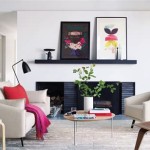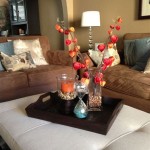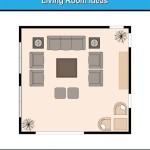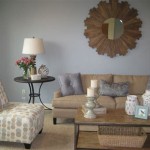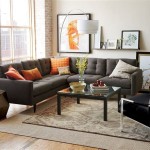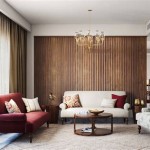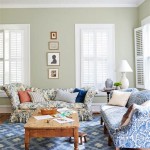Wood Floor Living Room Ideas: A Comprehensive Guide
The living room, often considered the heart of a home, serves as a central gathering space for family and friends. Its design and ambiance significantly impact the overall feel of the residence. Flooring plays a crucial role in establishing this atmosphere, and wood flooring consistently emerges as a preferred choice due to its inherent warmth, aesthetic versatility, and potential for long-term value. This article explores various wood floor living room ideas, examining different wood types, finishes, styles, and design considerations to help inform the selection process.
Wood flooring offers a wide spectrum of options, ranging from classic hardwood planks to more contemporary engineered wood solutions. The choice of wood species, finish, and installation pattern can dramatically alter the look and feel of a living room. Understanding the nuances of these variables is essential for creating a space that is both visually appealing and functionally suitable for the intended use.
Key Considerations When Choosing Wood Flooring for a Living Room
Selecting the right wood flooring involves carefully evaluating several key factors. These include the type of wood, the desired aesthetic, and the practical considerations related to maintenance and durability. Neglecting any of these aspects can lead to dissatisfaction with the final result.
Firstly, the *type of wood* is paramount. Hardwood options like oak, maple, and cherry offer varying levels of hardness, grain patterns, and color tones. Oak, particularly red oak, is a durable and readily available choice, known for its prominent grain and reddish hues. White oak, another popular option, presents a more subtle grain and lighter color palette. Maple is prized for its smooth, consistent grain and light color, making it ideal for modern designs. Cherry wood boasts a rich, reddish-brown color that deepens with age, adding a touch of elegance. Beyond hardwood, engineered wood floors provide an alternative. These consist of a thin layer of hardwood veneer bonded to a core of plywood or other composite material. Engineered wood floors offer increased stability and resistance to moisture, making them suitable for environments with fluctuating humidity levels.
Secondly, the *aesthetic considerations* are crucial for achieving the desired look. The style of the living room—whether it's traditional, modern, rustic, or eclectic—should guide the choice of wood flooring. For a traditional setting, darker wood tones and classic installation patterns like herringbone or parquet can evoke a sense of timeless elegance. Modern living rooms often benefit from lighter wood tones and clean lines, such as wide-plank installations. Rustic designs embrace the natural imperfections of wood, featuring textures, knots, and varying grain patterns. The width of the planks also influences the overall aesthetic. Wider planks tend to create a more spacious and contemporary feel, while narrower planks offer a more traditional and detailed look.
Thirdly, *practical considerations* such as durability, maintenance, and budget must be addressed. The amount of foot traffic in the living room will impact the choice of wood species and finish. High-traffic areas require more durable woods and protective finishes. The maintenance requirements associated with different types of wood flooring should also be factored in. Some woods are more susceptible to scratches and dents, requiring regular refinishing. The budget available for flooring will naturally influence the scope of options. Solid hardwood flooring generally commands a higher price point than engineered wood, though the long-term value and lifespan should be considered.
Exploring Different Wood Flooring Styles and Finishes
The style and finish of wood flooring are essential to the overall look and feel of a living room. These elements can enhance the inherent beauty of the wood while also providing protection and durability. Several different styles and finishes exist, each offering unique characteristics and aesthetic qualities.
One popular style is *traditional hardwood planks*. These planks typically range in width from 2 to 4 inches and are installed in a linear fashion. This classic style is versatile and can be adapted to a variety of living room designs. Traditional planks can be stained in various colors, from light and airy to dark and dramatic. The finish applied to these planks can range from matte to high-gloss, influencing the overall look and feel of the room. For example, a matte finish can create a more casual and inviting atmosphere, while a high-gloss finish can add a touch of formality and elegance.
Another style gaining popularity is *wide-plank wood flooring*. These planks are typically wider than 5 inches and can extend up to 12 inches or more. Wide planks create a more spacious and contemporary feel in the living room. They showcase the natural grain patterns of the wood and can make a room appear larger. Wide-plank flooring is often paired with minimalist furniture and decor to create a clean and sophisticated look. The wider planks also mean fewer seams, which can contribute to a more seamless and cohesive design.
The choice of *finish* also greatly impacts the overall aesthetic and durability of the wood floor. Common finishes include polyurethane, oil-based finishes, and newer, eco-friendly options like water-based finishes. Polyurethane finishes are durable and water-resistant, making them a popular choice for high-traffic areas. Oil-based finishes penetrate the wood, enhancing its natural grain and providing a warm, rich look. However, they can be more prone to scratches and require more frequent maintenance. Water-based finishes are typically lower in VOCs (volatile organic compounds) and offer a more environmentally friendly alternative. They are also available in a range of sheens, from matte to glossy. The finish chosen should complement the overall style of the living room and provide adequate protection for the wood flooring.
Integration with Living Room Design and Decor
Wood flooring should be seamlessly integrated with the overall design and decor of the living room. The color, style, and texture of the flooring should complement the other elements in the room, such as the furniture, wall color, and accessories. A cohesive design creates a harmonious and inviting space.
One key consideration is the *color palette* of the living room. The color of the wood flooring should complement the wall color and the furniture. For example, if the walls are painted in a cool color like blue or gray, a warm-toned wood floor can add balance and warmth to the room. Conversely, if the walls are painted in a warm color like beige or yellow, a cool-toned wood floor can provide a refreshing contrast. The color of the furniture should also be taken into account. Dark wood furniture can be paired with light wood floors to create a striking contrast, while light wood furniture can be paired with darker wood floors for a more subtle and cohesive look.
Another important aspect is the *style* of the living room. The wood flooring should reflect the overall style of the room, whether it's traditional, modern, rustic, or eclectic. In a traditional living room, classic wood flooring styles like herringbone or parquet can add a touch of elegance and sophistication. In a modern living room, clean lines and minimalist designs are often preferred. Wide-plank wood flooring and light wood tones can create a spacious and contemporary feel. In a rustic living room, natural textures and imperfections are embraced. Reclaimed wood flooring or wood with knots and varying grain patterns can add character and charm. In an eclectic living room, anything goes! The key is to create a unique and personal space that reflects the homeowner's individual style. Mixing and matching different wood types and finishes can add visual interest and personality.
Finally, *accessories and rugs* can be used to enhance the look and feel of the wood floor. Area rugs can define different zones within the living room, such as the seating area or the fireplace area. They can also add warmth and texture to the space. The color and pattern of the rugs should complement the wood flooring and the other elements in the room. Accessories such as throw pillows, blankets, and artwork can also be used to tie the room together and create a cohesive design. The key is to choose accessories that reflect the homeowner's personal style and that complement the overall aesthetic of the living room.
Ultimately, the choice of wood flooring for a living room depends on a variety of factors, including personal preference, budget, and the overall design of the home. By carefully considering these factors and exploring the various options available, homeowners can create a living room that is both beautiful and functional, a space that welcomes family and friends while reflecting their unique style and personality.

Flooring Options For Living Room And Bedroom Tarkett Engineered Wood Matches Your Interior Preferences

Low Cost Living Room Flooring Options Ideas Reallycheapfloors America S Cheapest Hardwood

Hardwood Flooring For Living Room Tarkett S Engineered Wood Durable Comfortable Underfoot And Hygienic

Best Flooring Ideas For Your Living Room

25 Stunning Living Rooms With Hardwood Floors

The Best Wood Flooring For Living Rooms Ted Todd Fine Floors

Choosing Wood Floors In Your Living Room Tarkett

The Timeless Elegance Of Hardwood Floors In Living Rooms

Best Flooring Ideas For Your Living Room

67 Luxury Living Room Design Ideas


